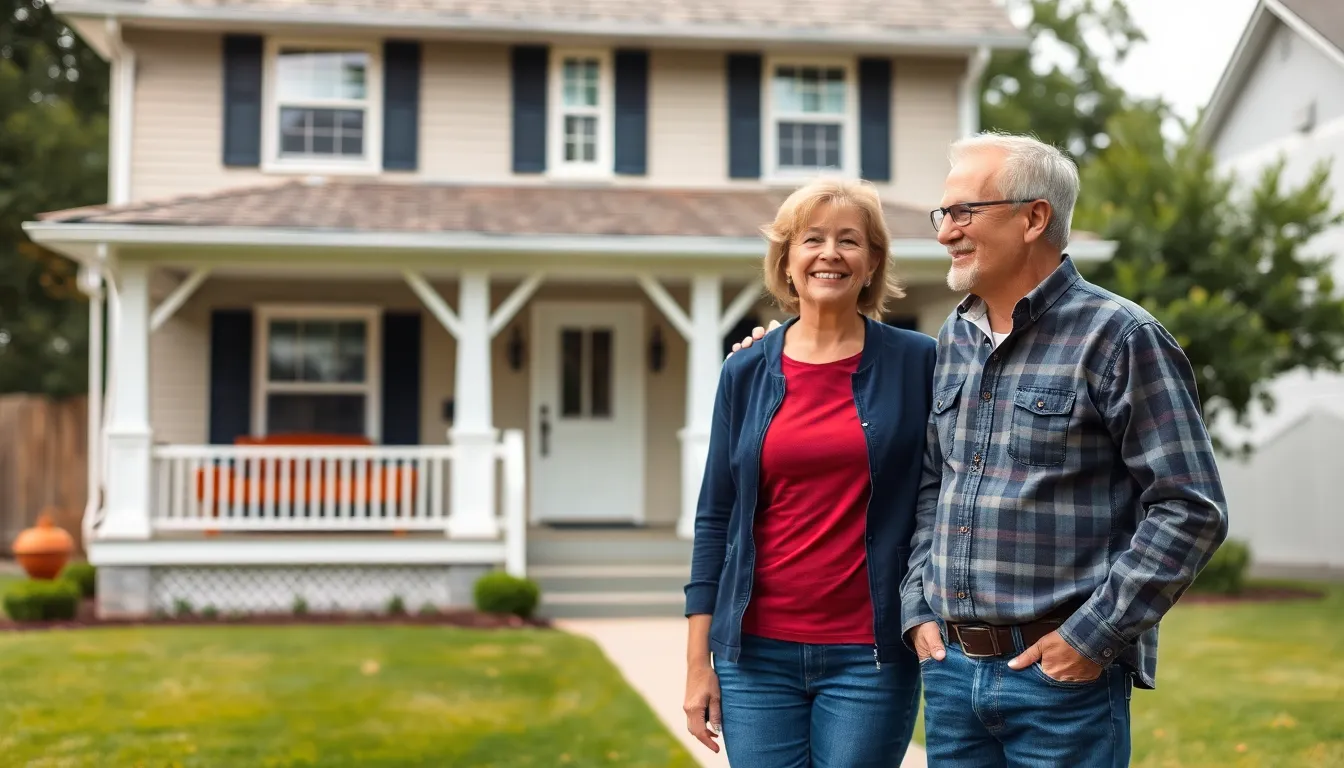Table of Contents
ToggleDreaming of a second home? You’re not alone. Whether it’s a cozy cabin in the woods or a sun-soaked beach house, many people want that perfect getaway. But before packing up the family and heading to the great outdoors, there’s a little thing called a down payment that needs attention.
Don’t let that term scare you. Think of it as the golden ticket to your second slice of paradise. With the right strategy, saving for that down payment can be less of a chore and more of an adventure. After all, who wouldn’t want to invest in a space where they can kick back, relax, and escape the daily grind? Let’s dive into the essentials of securing that down payment and turning your dream into a reality.
Understanding Down Payment For Second Home
Saving for a down payment on a second home typically requires careful planning. Many lenders suggest aiming for at least 20% of the home’s purchase price. For example, on a $300,000 property, this equates to a $60,000 down payment. Some buyers opt for a lower percentage, but this often results in higher monthly payments and additional private mortgage insurance costs.
Selecting the right financing option plays a crucial role in this process. Conventional loans and government-backed loans, like FHA, may offer different requirements. Additionally, securing a second mortgage or a home equity line of credit can help some buyers access needed funds.
Establishing a dedicated savings account simplifies reaching the down payment goal. Allocating monthly contributions to this account encourages consistent savings. Automating the transfer can also ensure buyers don’t overlook this essential step.
Calculating total costs also involves considering closing costs and maintenance fees. Closing costs typically range from 2% to 5% of the purchase price. That means a buyer could spend between $6,000 and $15,000 on closing fees for a $300,000 home. Awareness of these additional expenses helps buyers prepare for the overall financial commitment.
Evaluating personal finances remains essential for achieving the down payment. Understanding credit scores can significantly influence loan options and interest rates. Higher credit scores generally lead to better lending terms, resulting in considerable savings over time.
Exploring various resources can also provide helpful insights. Financial advisors and mortgage brokers can offer tailored advice. Many online tools and calculators assist potential buyers in estimating costs and payment structures effectively.
Importance Of Down Payment For Second Home

A substantial down payment for a second home plays a key role in the purchasing process. This initial investment affects financial security and overall investment strategy.
Financial Security
Having a sizable down payment enhances financial stability. It reduces the principal loan amount, leading to lower monthly mortgage payments. Lower payments contribute to improved cash flow, making it easier to manage expenses related to the second home. Additionally, a larger down payment can positively influence interest rates. Lenders often view borrowers with substantial down payments as less risky, potentially securing better loan terms. The financial cushion also provides extra comfort during unforeseen events, ensuring that ownership remains manageable.
Investment Perspective
From an investment standpoint, a well-planned down payment shows commitment to the property. Significant initial investment can instill immediate equity, allowing for potential appreciation in value over time. Homes in desirable locations often appreciate at higher rates, leading to increased net worth. A robust down payment might open opportunities for favorable financing options, further enhancing overall returns. Ultimately, the right down payment can create a strategic advantage, positioning buyers to make informed decisions in the real estate market.
How Much Down Payment Is Required?
Determining the down payment for a second home hinges on various factors, including the type of mortgage and personal financial readiness. Generally, a down payment of at least 20% of the home’s purchase price is advisable.
Conventional Loans
Conventional loans typically require a down payment of 5% to 20%. For example, on a $300,000 home, a 20% down payment amounts to $60,000. Buyers opting for less than 20% often encounter private mortgage insurance (PMI), adding to their monthly costs. Lenders assess credit scores and debt-to-income ratios, influencing eligibility and terms. Greater down payments can lower interest rates and monthly payments, making it financially advantageous. Evaluating financing options carefully leads to better long-term affordability.
FHA Loans
FHA loans cater to those with lower credit scores, allowing down payments as low as 3.5%. This option appeals to first-time buyers and those seeking a second home with limited savings. A $300,000 home would require a down payment of just $10,500 under FHA guidelines. While this initial investment is lower, FHA loans entail mortgage insurance premiums, which affect overall costs. Eligibility focuses on financial standings, particularly debt-to-income ratios, with a maximum limit set at 43%. Exploring various loan types can help buyers align their financial strategies accordingly.
Strategies For Saving For A Down Payment
Saving for a down payment can feel challenging but is achievable with effective strategies. Prioritizing budgeting techniques and utilizing high-interest savings accounts can accelerate savings.
Budgeting Techniques
Creating a budget is essential to pinpointing where to save. Identify monthly expenses and categorize them to discover areas for potential cutbacks. Setting specific savings goals can create a clear path toward the down payment target. For example, saving $500 monthly toward a $60,000 down payment creates a tangible plan over 10 years. Tracking spending habits helps in reallocating funds toward savings, enhancing the overall effectiveness of the budget.
High-Interest Savings Accounts
Choosing a high-interest savings account can significantly boost savings. These accounts typically offer better interest rates than traditional savings accounts, making every dollar work harder. Many banks provide online options that focus on higher yields, allowing savers to accelerate their progress toward their down payment goals. Automating deposits into these accounts makes saving consistent. Even small regular contributions can add up, turning the dream of a second home into a reality more efficiently.
Securing a down payment for a second home doesn’t have to feel overwhelming. By approaching it as an exciting journey and utilizing effective strategies, potential buyers can make their dreams a reality. With careful planning and budgeting, it’s possible to save the necessary funds while considering various financing options that best suit individual circumstances.
Establishing a dedicated savings account and automating contributions can streamline the process. Understanding all associated costs and evaluating personal finances will further enhance one’s readiness for this investment. Ultimately, a well-planned down payment not only strengthens financial security but also positions buyers for long-term success in the real estate market.








